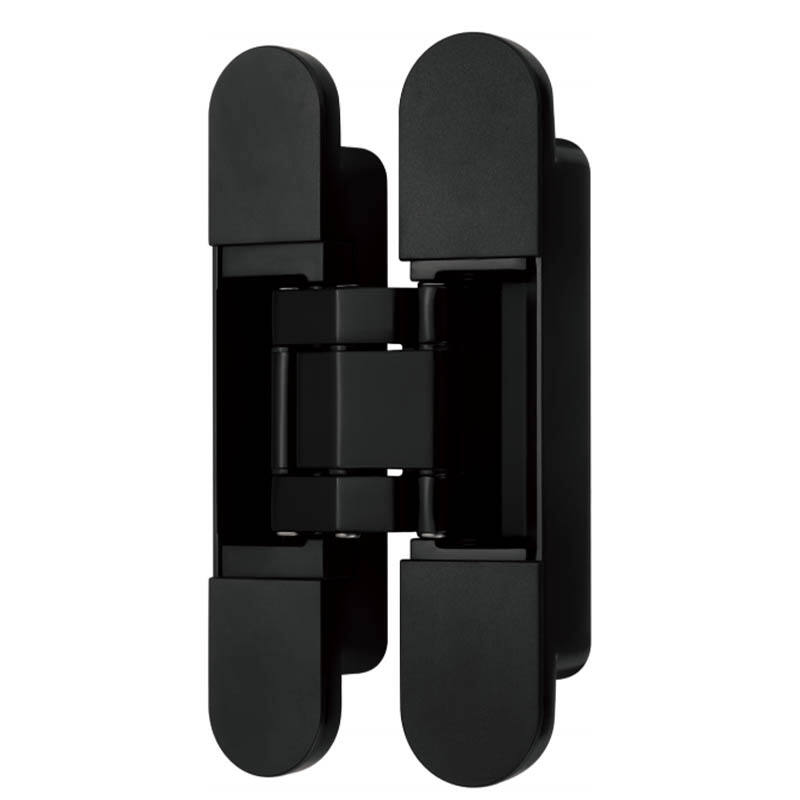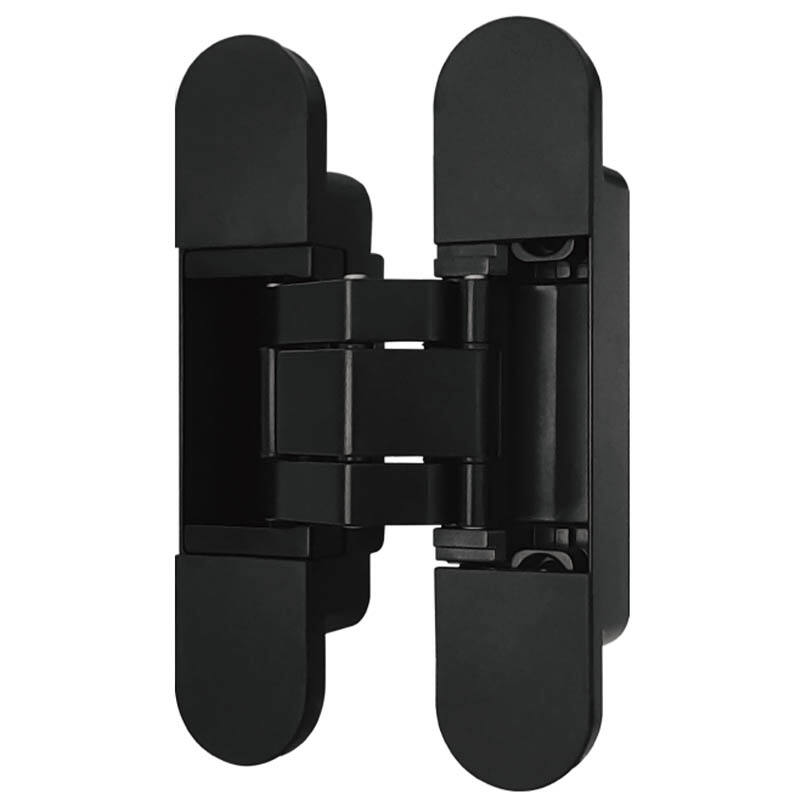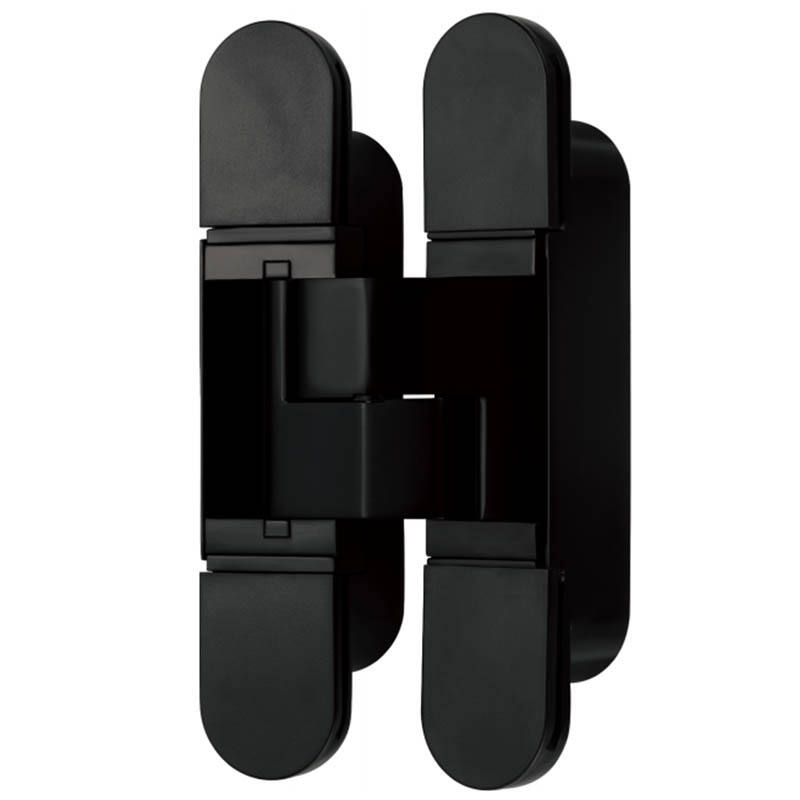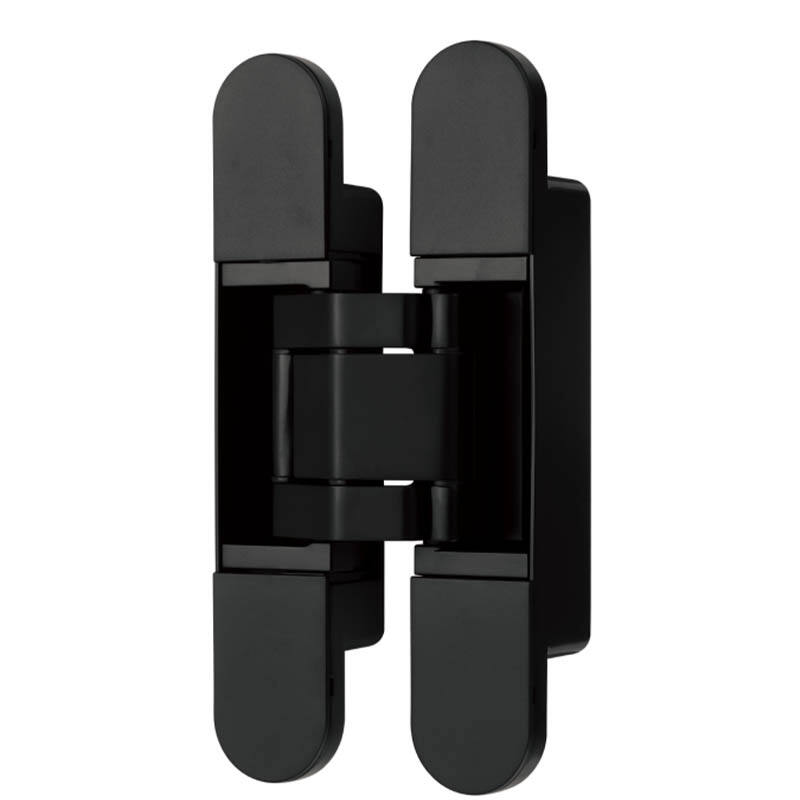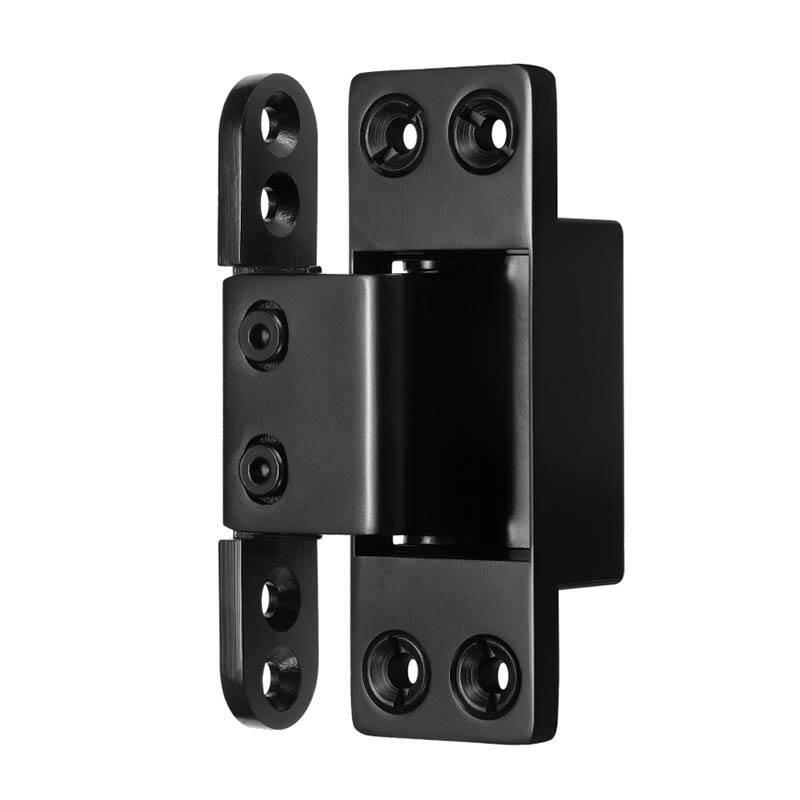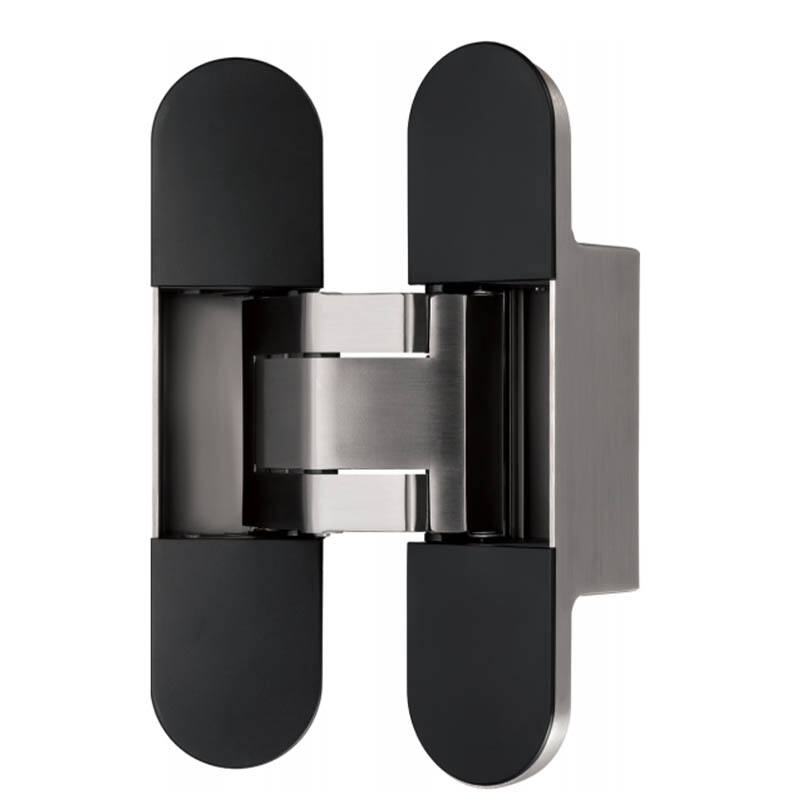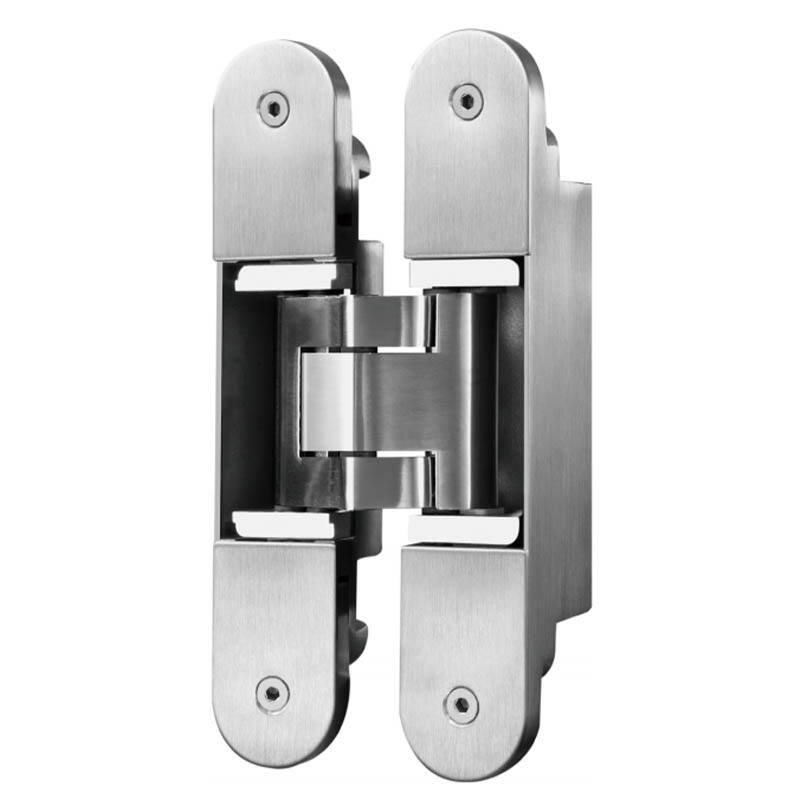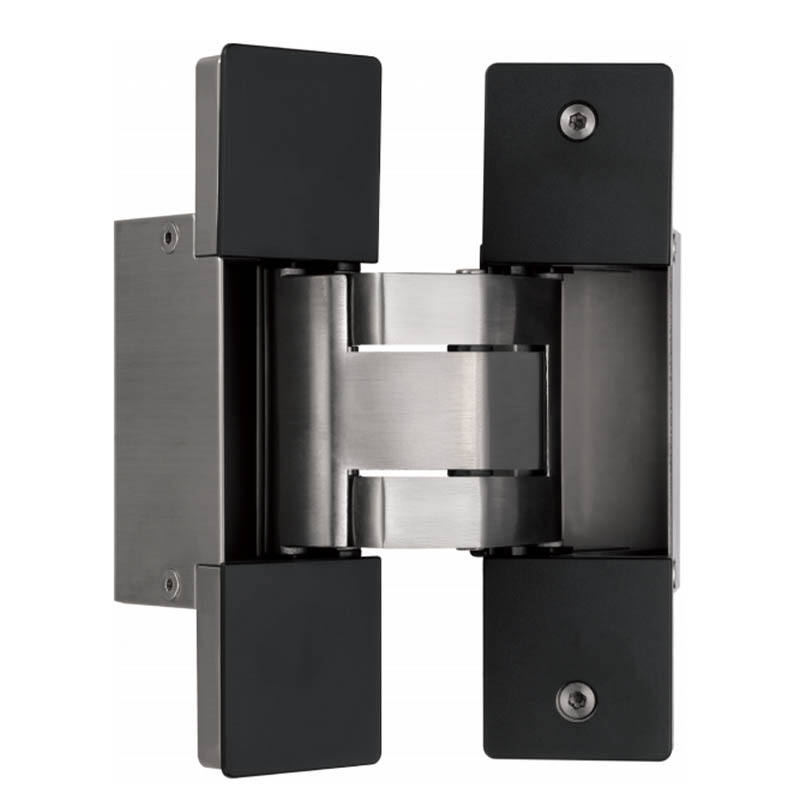Hidden installation tips and precautions for door hinges
Understanding Hidden Hinges
Concealed hinges, sometimes called hidden hinges, are built so they disappear completely when the door shuts, giving furniture that clean look everyone wants these days. They work really well in spaces where people want something simple without any visible hardware sticking out. Think modern kitchen cabinets or those fancy interior doors in high end apartments. What's great about these hinges isn't just how they look either. The way they function actually makes installation easier for carpenters too, which explains why so many designers specify them for their projects nowadays.
When installed properly, these hinges let doors lie flat against walls and frames, creating that seamless look everyone wants. Beyond looks though, there's another reason why people choose them. Because they're hidden inside the door frame itself, it becomes much harder for someone trying to force entry through tampering. The strength factor shouldn't be overlooked either. These hinges can handle pretty heavy doors without breaking down or losing function over time. That matters a lot in commercial buildings or anywhere where doors need to open close hundreds of times daily. Doors stay aligned longer too, which saves money on repairs down the road. For architects and builders looking to balance style with substance, hidden hinges offer both in one package.
Types of Hidden Hinges
Getting familiar with various kinds of hidden hinges really matters when picking out what works best for specific requirements. Invisible hinges have become quite common these days since they let doors move freely without showing off any metal parts getting in the way, which gives everything a neat appearance. People love this style particularly in newer homes and office buildings where having fewer visible elements makes sense aesthetically. Interior designers often recommend them for kitchen cabinets too, as they create that seamless look many homeowners want nowadays.
Adjustable hinges provide the advantage of post-installation fine-tuning, which significantly enhances door functionality. They allow you to accommodate slight misalignments, ensuring that doors fit perfectly within their frames and operate smoothly over time. This flexibility is essential in both residential and commercial applications where precise alignment is crucial.
Adjustable concealed hinges really shine when dealing with heavier loads, giving both the ability to fine tune positioning and solid support for door weights that would strain regular hardware. They work great on those big commercial style doors where strength matters most but nobody wants to see bulky hardware sticking out. The best part? These heavy duty hidden hinges let massive doors swing open smoothly despite their weight, all while keeping that clean look architects love so much. Contractors swear by them for installations where aesthetics count as much as functionality.
Why Proper Installation of Hidden Hinges is Crucial
Getting those hidden hinges installed right makes all the difference when it comes to keeping doors properly aligned. When done correctly, doors will close nice and tight without any annoying gaps showing up around the edges. This looks much better in any space while actually doing what it should do - keep people private and stop cold air or noise from coming in where it shouldn't. Doors that aren't aligned just right tend to leave these ugly little spaces between frame and door surface. These gaps ruin the whole look of whatever room they're in plus make the door work worse than intended over time.
Getting hidden hinges to last longer really depends on how they're installed from the start. When someone takes the time to put them in right, there's no need to keep replacing them or doing constant maintenance work. If the installation isn't done properly though, things start breaking down faster than expected. Hinges get loose, stop working correctly after just a few months instead of years. For regular doors, basic alignment matters a lot. But when dealing with heavier doors that require special hinges or adjustable systems, getting everything perfectly aligned becomes even more important. These types of installations demand extra attention because the weight distribution affects how well the door functions day after day.
Hidden Installation Tips for Door Hinges
Getting the hinge positions right is really important when installing doors properly. If someone messes up here, doors might swing crooked or leave annoying gaps around the edges. The best approach? Mark where each hinge goes on both sides first so everything lines up correctly across all three points. Most folks put two hinges about 5-8 inches from each end of the door, then stick another one right in the middle spot for stability. But watch out those measurements aren't exact science everyone gets them wrong sometimes which explains why so many doors don't close perfectly after installation.
Getting those mortises cut right really matters for good results. Most woodworkers grab both a chisel and router to get that tight fit where hinges need to sit flush against both the door and frame. Routers actually work pretty well for this job because they can remove material faster and more accurately than hand tools alone. Just make sure to get one with a flush cut bearing bit attached and maybe invest in a quality door hinge template. The time saved during installation definitely pays off later since misaligned hinges become a real headache down the road when doors start sticking or don't close properly. A little extra care upfront prevents lots of frustration later on.
When it comes time to attach those hinges, make sure they're properly fixed to both the door itself and the surrounding frame structure. For best results, grab some heavy duty concealed adjustable hinges made for this exact purpose since regular screws just won't cut it over time. Start by marking where each screw should go with a simple pencil dot right in the middle spot. Then switch to a self centering drill bit so there's no risk of damaging the wood while drilling. The key here is to tighten everything down just enough without going overboard because too much pressure can actually damage those precious screw holes we've worked so hard to create. Follow through on all these little details and the finished product will look great and last years longer than most people expect from their standard door installations.
Adjusting Hidden Hinges
Knowing how to adjust those hidden hinges makes all the difference when getting doors to sit just right. Start by finding those tiny adjustment screws on the hinge itself. Most have three different settings actually one for moving left/right, another for up/down, and a third that controls how far out or in the door sits. What's great about these little screws is they let folks tweak things without taking apart the whole hinge mechanism. This means those sturdy concealed door hinges stay put and keep working properly even after adjustments are made.
Getting the alignment right means regularly looking at how the door swings and checking those gaps all around it. When adjusting screws, go slow and make small tweaks rather than big moves. Most folks find that gradual adjustments work best for getting everything just right without messing things up. The whole point is keeping the door working smoothly while taking advantage of what those heavy duty hidden hinges can do. Don't forget about regular checkups either. A little bit of attention now goes a long way toward avoiding bigger problems down the road and making sure doors last for years instead of months.
Troubleshooting Common Issues
When dealing with problems in concealed door hinges, most folks start by looking at those pesky gaps between the door edge and the surrounding frame. If these gaps look off balance on either side, that usually means something's wrong with how those hidden hinges are set up. Take a good look at where the hinges sit on both the door and the wall. Sometimes just a tiny tweak can fix things when there's visible misalignment. A simple screwdriver and patience go a long way here. Just don't force anything since overtightening can create new headaches down the road.
When doors won't shut right, most folks find themselves dealing with those heavy duty hidden hinges or loose screws somewhere along the line. Getting those hinges back into their proper place usually fixes things up pretty well. Sometimes just shifting them around a bit or giving those old screws another tighten does wonders for getting that door back on track both functionally and visually speaking. The trick is finding where exactly they've gotten out of whack over time from regular use.
Maintaining Your Hidden Hinges
Maintenance matters if we want hidden hinges to last longer and work properly. Cleaning these components regularly stops rust from forming and keeps dirt from building up inside the mechanism where it can cause problems down the road. A good practice involves applying silicone lubricant rather than traditional oils. The silicone stuff works wonders because it doesn't pull in dust particles like oil does, so it stays cleaner longer. This makes silicone especially good choice for those heavy duty concealed door hinges that get used all day every day without anyone seeing them.
Keeping an eye on hinge conditions matters quite a bit. Look out for telltale signs something's wrong like rust spots forming or hinges getting stiff when opened closed. When regular adjustments stop fixing alignment problems or there's visible damage happening, it might be time to replace those old hinges altogether. Regular maintenance checks help catch small issues before they turn into big headaches later on, ensuring invisible hinges continue working properly without causing unnecessary frustration down the road.
Recommended Products
Hot News
-
Hidden Hinges: The Invisible Solution for Seamless Design
2024-11-08
-
The Advantages of Alloy Concealed Hinges in Modern Architecture
2024-11-04
-
Shedding water in the big river, struggling to break the waves----Jibang Group's 2024-2026 business goals and 2024 annual business plan meeting was successfully held
2024-01-22
-
The wind is strong and the sails are sailing. It is the right time to work hard.
2024-01-22
-
The company established a special project team and discussed different technical issues with foreign engineers
2024-01-22
-
Endless Learning Empowers Development -- Establishment of Jibang College and Launching of Guanggong Jiban Metal Materials Class
2024-03-22

 EN
EN
 AR
AR
 HR
HR
 CS
CS
 DA
DA
 NL
NL
 FI
FI
 FR
FR
 DE
DE
 EL
EL
 HI
HI
 IT
IT
 KO
KO
 NO
NO
 PL
PL
 PT
PT
 RO
RO
 RU
RU
 ES
ES
 SV
SV
 TL
TL
 IW
IW
 ID
ID
 LV
LV
 LT
LT
 SR
SR
 SK
SK
 SL
SL
 VI
VI
 SQ
SQ
 ET
ET
 HU
HU
 TH
TH
 TR
TR
 MS
MS
 IS
IS
 LA
LA
 KK
KK
 UZ
UZ
 KY
KY
